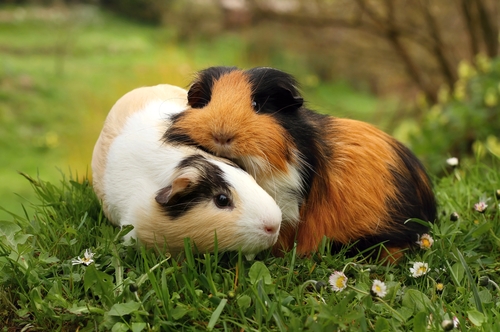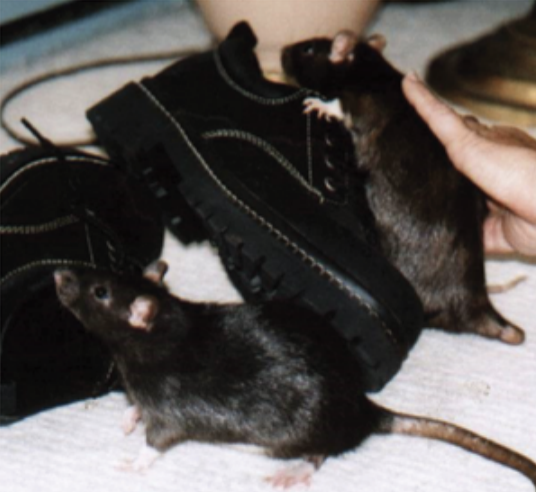P-E-T spells more than D-O-G (or C-A-T)
By Mil Scott
To most Americans, the word pet is synonymous with ‘the canine and feline companions that share approximately 65% of households – including nearly 78 million dogs and 86 million cats. While the reasons for these staggeringly large numbers are obvious to anyone who’s enjoyed the company of such four-legged family members, the fact that other households across the nation include over 12 million “fur kids” categorized simply as ”small animals”‘ may require a bit more explanation. Yet, despite the inaccurate negative stereotypes that have led certain of these to be viewed more in the light of pests than pets, by those blessed with their intimate acquaintance, they are every bit as fiercely loved as the species most often described as “man’s best friend.”
Though education is key to enriching life in many ways, we as humans don’t always open the door to learning about subjects long accepted as “common” (and assumedly accurate) “knowledge .. ” Until, that is, life presents us with a circumstance that challenges our comfortable superiority (a.k.a, Ignorance)– such as that: of a domestic rat shivering beneath a drive-up mailbox: on an unseasonably wintry first day of spring., Such was the circumstance challenging me, and my husband Andre, back in March 2005, when we met our beloved Molly.
To the average person, rats are generally dismissed as the stuff of either dark fantasy or urban legend … most closely associated with tales of cat-sized creatures scurrying through subways, antagonists like J. K Rowling’s Peter Pettigrew, or spreaders of the Plague – in short, creatures to be avoided at all cost.
But, as A.D. Williams said, “When I look into the eyes of an animal, I do not see
an animal, I see a living being, I see a friend, I feel a soul” – which is why, when faced with a small brown-and-white creature, looking up at us in curiosity on that March day, the mere thought of simply walking away was a cost too great to bear. As a result, after o:only·the briefest moment’s deliberation, Andre knelt down, holding out a hand — and to our amazement, the grateful little rat immediately hopped aboard!
Keenly aware we were suddenly in need of some education, after bringing this clearly amicable being out of the elements and into our vehicle (where she happily settled on my lap, gently nibbling on my sleeve), our first move was to call Doc for information and advice. Noting rats eat a wide variety of foods, and sharing the story of a particular rodent patient he’d once treated, he to Ied us rats make excellent pets, and provided all the assurance needed for us to take her home and begin gleaning firsthand knowledge from Molly herself. While she quickly taught us much about how resourceful, intelligent and affectionate rats are, It took nearly a full two weeks for her to get through to us about another subject: multiplication. While we’d found it amusing that she used the tissue we’d been reeling off for her to form a cocoon that occupied most of her home and chalked up her growing belly to a diet much improved over whatever she may have been eating before her arrival, we were unspeakably shocked when, early one Sunday evening, we pushed the tissue cocoon aside in search of Molly- and unearthed, in addition, two tiny pink babies!
I suspect throughout this time (and well beyond) Molly had several good laughs about the questionable intellect of humans. Nonetheless, she raised her boys (who became Noonan and Flannery) to treat us kindly and be patient with our foibles. Within a very short time, this little family had made an indelible impression on our lives 00 which we vowed would never be devoid of rats again. They also made us keenly aware of how undeserving rats are of the negative beliefs about them that have become seemingly ingrained into human DNA– leading us to vow as well to champion the cause of these true animal underdogs.
For those who’ve never had such a crash course in rat acquaintance forced upon them, it might seem all this positivity toward “vermin” is merely the result of the blindness that is (pet parent) love. Not so. In 2012, the University of Chicago researches conducted a series of experiments on
rat empathy — and learned that rats’ compassion rivals event that of many humans. The study presented various scenarios involving two rats: one caged, one free. In each case, the free rat would work to release the caged rat, regardless of whether a reward of any kind was provided to add incentive. In fact, even when the free rat was given a pile of chocolate chips, he still released the caged rat, and invariably saved at least one chocolate chip to give him upon release — no small feat for creatures who truly love their snacks!
Loving snacks, of course, is hardly a trait unique to rats — as any dog or cat lover ( and most humans) surely will attest. Something few people realize, however, is that groundhogs (yes, you read that correctly) likewise savor treats — including tomatoes, kale, granola, and Sam’s Yams sweet potato treats (created for dogs). They also adore snuggling in cozy bedding (i.e. the softest of blankets) – and the company of their humans. And. if you’ve ever run across one of the humans privileged to have a groundhog counted among their pets, you already know how highly they value the experience.
Of course, since groundhogs, as pets are even far rarer than rats, chances are you’ve never met a groundhog-inclusive family. Neither had we, as of the summery late spring day, when an orphaned baby (smaller than an adult pet rat) crossed our path, wandering tentatively across the road behind our house, in the direction of the dumpster scheduled to be emptied at any moment, oblivious of an approaching vehicle or the dangers it presented. As he had upon discovering Molly, once more Andre reached down, this time scooping up the baby (all 6.9 ounces of him). We began feeding him Esbilac puppy formula, on which he grew and thrived, and in another echo of Molly, allowed him to provide us with a firsthand education in his particular brand of rodent behavior.
As a result of this experience, we subsequently began looking into the process for legally obtaining a groundhog as a pet (which is allowed in both New Jersey and Pennsylvania, provided a permit is secured, and the animals are purchased from a properly licensed breeder). This led to our adoption of Clara in 2011… followed by Maude in 2012, Bessie in 2015, and Moses this past May. And, thanks to the wide reach of the internet, we also discovered several fellow groundhog parents, all of whom share our devotion to these unfamiliar pets.
While it might seem creatures are best known for occupying dirt burrows probably wouldn’t consider cleanliness a particularly high priority, groundhogs are actually fastidious in their bathroom habits, and in the maintenance of personal hygiene. Like cats, they’re instinctively drawn to litter box use (which they begin at only a few weeks old) and practice a regular routine of wearing down their teeth and trimming their nails. They also begin at an early age to steal discarded papers, bags (and clean laundry left within their reach) for use in indoor burrow building — despite the fact they seem to generally prefer lounging on the couch or sleeping in their humans’ beds throughout all but the coldest winter months. In addition, as you can see from
the accompanying Halloween photo featuring Maude with Common Sense adoptees, Lucy (pet rat) and Donald (cat), they live peacefully with their brothers and sisters of other species (including, in our household, cats, pet rats, and European starlings — which, incidentally, can also be kept legally in NJ [no permit required], and are another highly desirable type of pet… one that can literally converse with you,
given their capability to acquire a vocabulary of up to 800 words). And, though our groundhogs have an approved enclosure to satisfy permit requirements, they spend the vast majority of their time enjoying free run of the house, a privilege they’ve earned by proving themselves surprisingly civilized beings for a species generally thought of as “wild” animals.
Though groundhogs are yet to reach significant recognition for their companionability and intelligence, in recent years rats have begun making inroads toward more positive public reception, thanks in part to the Tony award-winning play, The Curious Incident of the Dog in the Nighttime, which features a rat character, played by rodent actors rescued by Broadway dog trainer, Lydia DesRoche, and who have been the subject of articles in The New York Times, and various other news outlets. And, of course, both rats and groundhogs grace the pages of each issue of our magazine, The Rodent Reader Quarterly, a publication founded in 2010 to aid in dispelling incorrect negative stereotypes and celebrate these misunderstood species in a literary and artistic context.
Of course, no amount of “book learning” can take the place of experience when it comes to fully appreciate life with groundhogs and pet rats. With that in mind, I suggest obtaining your own firsthand education with one or both, that you, too, might “see the friend” and “feel the soul” each represents.



